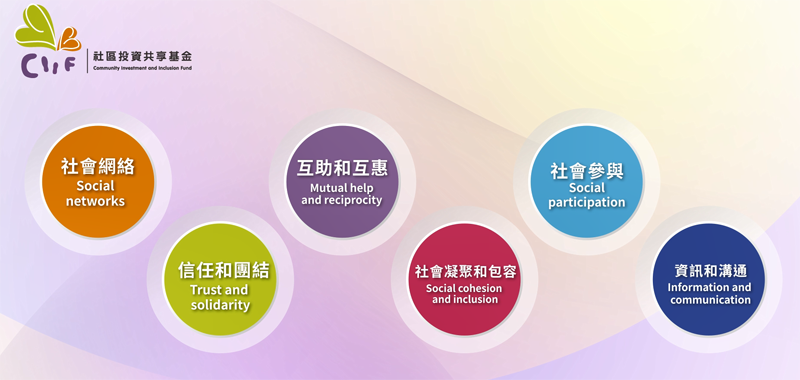Section One: Introduction to Social Capital Theory
Dimensions of Social Capital
Scholars tend to agree that social capital is a multidimensional concept, but there has not been a consensus on its dimensions. The dimensions of social capital are interpreted differently based on various contexts, perspectives, and levels of analysis (Woolcock & Narayan, 2000). For example, Putnam focuses on dimensions such as networks, norms, and trust (Putnam, 1993a), while Lin emphasises the importance of resources and social networks (Lin, 2001a).
Six Dimensions of Social Capital
According to the World Bank (Grootaert et al., 2004, p. 5), social capital includes six dimensions (Figure 5): (1) social networks; (2) trust and solidarity; (3) mutual help and reciprocity; (4) social cohesion and inclusion; (5) social participation; and (6) information and communication.

- Social Networks — This is a more common dimension of social capital, referring to the social organisations or informal networks in which people can access or participate. People can benefit from social networks and contribute to other members of those networks.
- Trust and Solidarity — This relates to people's trust in each other and other groups within the society, such as their level of trust in neighbours, service providers, and strangers.
- Mutual Help and Reciprocity — This dimension refers to mutual help and cooperation among people to achieve mutual benefits, such as collectively improving the community or responding to emergencies within the community.
- Social Cohesion and Inclusion — Communities include different groups, and different characteristics and lifestyles of these groups may easily lead to conflicts. This dimension concerns recognising the differences among various groups in the community, increasing interaction, and achieving cohesion and mutual inclusion.
- Social Participation — This dimension refers to people's participation in social organisations or networks. For example, participating in voluntary or obligatory organisations to serve needy groups and collaborating with other community members to collectively address community issues.
- Information and Communication — This relates to the transmission of information and communication channels. For example, people obtain important community information about public services and resources and express their opinions through various communication channels.
Back to Table of Contents Page 1 2 3 4 5 6 References